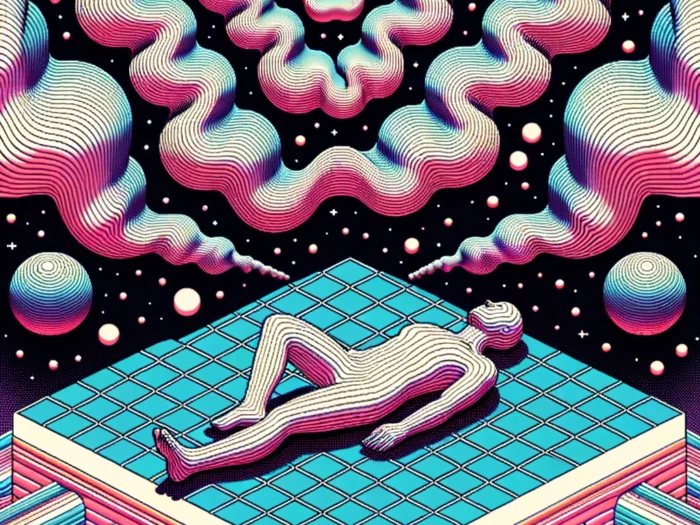Some people swear by routine. Some people hate routine. Like anything else, there are pros and cons to strict schedules. Routine can create positive habits, but too much routine creates some inflexibility. Is there a healthy balance?
- Routine: Love It Or Hate It?
- The Pratical Benefits Of A Daily Routine
- The Health Benefits Of A Daily Routine
- The Downside Of Routine
- The Science Behind Daily Routines: How They Affect Your Brain and Productivity
- The Role of Habits in Daily Routines: How They Shape Your Behavior
- Creating a Customized Daily Routine: Tailoring It to Fit Your Lifestyle and Goals
- Finding Middle Ground
Routine: Love It Or Hate It?
I’ve lived a life that both favors and shuns routine. I’m a college professor. I have to practice some routine in order to do my job. I’m a writer. Without discipline, nothing would get written. I’m a single dad. Without a schedule, I’d go crazy. Yet sometimes, routine eludes me. Other times, I get stuck in a rut. It’s a constant give and take to find a healthy balance.
Throughout the school year, I have set times that I need to get Annie to and from school. I have set times that I need to be to work. That creates routine. In the summer, everything changes and the schedule flies out the window. So I’ve seen both sides of the picture. Here’s what I’ve taken from that dilemma:
The Pratical Benefits Of A Daily Routine
- You get things done: It helps us return to the same patterns of living. That helps to get things done. Oddly, I have no writing schedule. I write when I write. On the other hand, my exercise and diet go out the window without a plan.
- You’re less likely to forget things: When you have a plan, you create habits. That means you’re more likely to remember, because you do things in a sequence. When your routine is off, you leave the keys in a different spot. Yikes! I hate it when that happens.
- You teach others well: Routines can help you to help others. Most teachers have specific lesson plans and certain styles of teaching. They’ve developed routines. These routines can make you an effective and efficient teacher. But too much routine = boring teacher.
- You’re more likely to be dependable: If you have a routine, you’re more likely to arrive on time. You’re more likely to be someone who others can depend upon. No routine can kill your sense of time, making you less punctual.
The Health Benefits Of A Daily Routine
When I first began sticking to a regimented daily routine, I noticed a surprising shift in my overall health. And no, it’s not that I suddenly had the chiseled physique of a fitness model or the flawless complexion of a skincare guru. Instead, I saw improvements that were subtler, but arguably just as valuable.
The most immediate effect was my improved sleep quality. Going to bed and waking up at the same time each day, as experts like the Sleep Foundation suggest, reinforces my body’s natural sleep-wake cycle. In the long run, this led to fewer middle-of-the-night wake ups and a generally more refreshed feeling in the morning. This underscores the potent influence a daily routine can have on our bodies’ internal clocks.
“Structure breeds healthy habits,” my doctor told me during one of our appointments. “Your body is a creature of habit. If you stick to a routine, it becomes more efficient at processing food, absorbing nutrients, and even shedding toxins.”
Indeed, I found that my digestion improved when I ate my meals at the same time each day. I have been eating healthier, too – after all, it’s easier to plan out healthy meals when you have a routine to follow.
Beyond physical health, my routine has also had positive effects on my mental wellbeing. For one, the predictability helps me manage stress. There’s comfort in knowing what to expect, which brings about feelings of safety and control. Secondly, setting aside specific times for relaxation – be it reading a book, immersing in a hobby, or simply unwinding in silence – ensures these crucial self-care moments don’t fall to the wayside.
Finally, routines help us free up mental space by reducing the number of decisions we have to make in a day; a concept eloquently coined by psychologist Roy F. Baumeister as ‘decision fatigue‘. By automating mundane choices like when to eat or exercise, we can dedicate more mental energy to the tasks that truly need our attention and creativity.
The Downside Of Routine
- You’re resistant to change: Routine at its extreme can become obsessive-complusive disorder. Sometimes, when you have a strict structure, you resist change. Have you ever turned down an invitation to do something fun because you hadn’t completed your routine? That might predict a problem.
- You might struggle with fear: If you resist change, you might have an issue with fear. Many people get stuck in a routine because they fear breaking out of the norm. Fear can hold you back from many of the things you could accomplish in life. Don’t let routine be your crutch.
- You may lack creativity: I said earlier that I don’t have a set writing schedule. I write when I’m inspired to write, I don’t write when I’m not. That doesn’t mean I go for long periods of time without writing. It just means that I don’t have set times. Too strict of a structure keeps us from being open and creative.
- You’re boring: Let’s face it, unless your routine is variety of extreme sports, you could be boring. The same old thing gets dull. You need to shake things up once in awhile. Think outside of the lines.
I’ve found that when I sway too far to either end of the spectrum, I get moody. Too much routine and I feel like I’m stuck in a rut. Too little routine and I get unorganized and easily frustrated.
The Science Behind Daily Routines: How They Affect Your Brain and Productivity
As someone who’s explored the world of productivity, I’ve come to appreciate the potency of science when explaining our personal and professional habits. Through understanding the scientific mechanisms behind routines, we can better appreciate and leverage their power.
Firstly, we need to delve a little into our brain’s chemistry. When we engage in a routine, our brain releases a neurotransmitter called dopamine. This ‘feel-good’ hormone provides a sense of satisfaction and reward. This is the mechanism that underpins our sense of pleasure when we’ve completed our daily tasks and met our personal obligations.
Moreover, routines can also impact our brain functioning on a structural level. When we make something a routine, the brain starts to create new neural pathways. These pathways are like the brain’s internal map – the more we use certain trails, the stronger and more developed they become.
The Impact on Productivity
With that understanding, how does this relate to our productivity? Well, let’s think of the brain as a muscle. Every time we go through our routine, we’re essentially doing reps, making that muscle stronger and more proficient. Our productivity muscle, this ability to get things done effectively and efficiently, is no different.
Albert Einstein once famously said, “Creativity is the residue of time wasted.” This quote encapsulates a surprising truth about productivity and routines: “The more our routines handle the mundane aspects of life, the more time and cognitive resources we have to devote to creative and complex tasks.”
By reducing the amount of mental energy spent on making decisions about mundane tasks, routines free up our cognitive resources for higher-level thinking. This translates into better problem-solving abilities, improved decision-making, and an increased capacity for innovative thinking. Consequently, it leads to enhanced productivity.
In conclusion, the science behind daily routines is indeed intriguing. From the release of dopamine to the building of neural pathways, these mechanisms help explain why we often find comfort and satisfaction in routine and how it can propel our productivity. I’ve experienced this firsthand and learned to respect the compelling interplay between our brains and our behavior, especially in a productivity context.
The Role of Habits in Daily Routines: How They Shape Your Behavior
Let me tell you, habits are the unsung heroes in our daily routine! I’ve seen it first-hand, and plenty of experts agree. They really have a massive impact on shaping our behavior.
Imagine habits as the software running in the background of our system (a.k.a. us). Every day, we are downloading, deleting, and updating this software. Whether we recognize it or not, our actions, thoughts, and even emotions can all become habitual. They occur repeatedly, almost without our conscious awareness. And just like software, they shape how the system — our behavior — operates.
Now, this is where things get interesting. According to the scientist duo, James O. Prochaska, and Carlo C. DiClemente, creators of the “Transtheoretical Model of Behavioral Change,” change in behavior is a process, not a single event. It comprises five stages: pre-contemplation, contemplation, preparation, action, and maintenance. In terms of habits, it means recognizing, acknowledging, strategizing, doing, and maintaining the desired behavior. So, not an overnight task, but as I’ve discovered, definitely worth the effort.
“We are what we repeatedly do. Excellence, then, is not an act, but a habit.” – Aristotle
The power of habit, as Charles Duhigg demonstrated in his seminal book The Power of Habit, sits in a three-part loop: the cue, the routine, and the reward. That’s the magic formula steering us. For instance, our morning coffee (cue) leads to us feeling more alert (routine) and feeling ready to start the day (reward). And voila, a habit is formed!
How Habits Sneak Into Our Daily Routine
But habits are sneaky; they can creep into our daily routine and position themselves quite comfortably. We may not even realize the tasks we perform daily are born out of habit until we purposefully pay attention. That habitual hour of social media before bed, that automatic reach for a soda after lunch, they’re all a part of our daily routines that, often, we don’t register consciously.
Observing our routines and identifying these habits can be an enlightening moment. I remember the day I recognized my habit of procrastination — constantly deferring tasks, till the pressure built up. The keyword here is ‘recognized,’ and that was the beginning. The good news is, once we’re aware and understand the nature of habits, we can take steps to modify, change, or strengthen them, depending on what benefits our daily routine and ultimately, our lives.
Creating a Customized Daily Routine: Tailoring It to Fit Your Lifestyle and Goals
Establishing a daily routine doesn’t mean you’re confined to a monotonous sequence of tasks day in and day out—far from it, actually. Instead, I’ve found that a tailored routine ensures the mundane necessities don’t monopolize my time and energy, leaving space for what truly matters to me.
When creating a personalized routine, it’s crucial to first identify your preferred lifestyle and goals. As for me, my passion lies in writing and sharing knowledge with a wider audience. This, coupled with the goal of leading a balanced life, serves as the blueprint for my routine.
- First things first, understand what your lifestyle is. Are you a morning person, or a night owl? Do you adore rigorous workout sessions, or lean towards meditative yoga? In my case, I made the conscious choice to adjust my sleep pattern to rise earlier, relishing in the calmness of morning hours for my writing.
- Then, pinpoint your short-term and long-term goals. In my journey, my short-term goal was to build a large enough readership, a dream that gradually transformed into the long-term goal of publishing a novel.
- And finally, organize your routine around these goals – not forgetting to incorporate health maintenance, leisure and socializing. Being a writer, my routine inherently includes hours of writing; yet I also set time aside for engaging in exercise, reading, catching up with friends and loved ones, and all that keeps me mentally and physically fit.
I cannot emphasize enough the importance of flexibility in a routine. A strict, unwavering schedule would only add stress, defeating the purpose. Elements of my routine shift depending on work deadlines or personal commitments, but always circling back to the core structure.
Even though it may seem tedious, the key to successfully tailoring a daily routine lies in constant assessment and adjustment aimed at it mirroring your current lifestyle and ambitions
Remember, it’s your personal routine. What works for me may not necessarily work for you. So take stock of your daily activities, analyze where your time is currently going and then adjust accordingly. You’ll be amazed at how personalizing your routine can create a momentum that carries you smoothly towards your goals.
The creation and adherence to a custom-fitted routine has been a journey for me, laden with trials and triumphs. Trust me, the endeavor is worth every bit of effort you put into it.
Finding Middle Ground
The key is to find a happy-medium, a place on the spectrum that works for you. That will be different for each of us. But if you feel like you’re too far to one end of the spectrum, I challenge you to try to break out of your comfort zone from time to time. Take a chance and do something spontaneous or buckle down and create a schedule.









